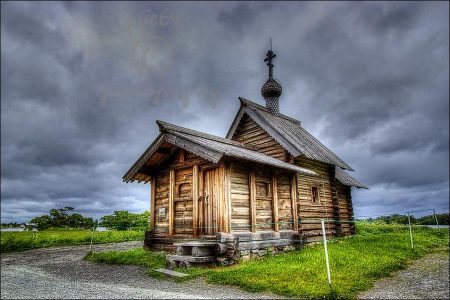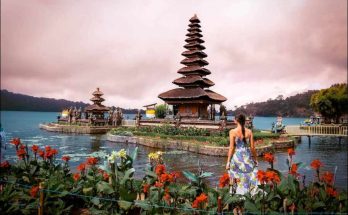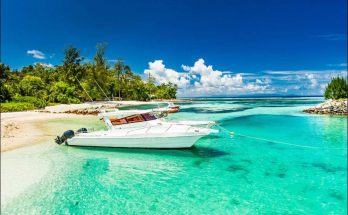Despite the campaign to root out religion, the Communists couldn’t move themselves to destoy the two allwooden churches and the bell tower on Kizhi Island in Lake Onega, Europe’s second-Iargest lake. As you approach by hydrofoil, the churches’ combined 31 cupolas command otherwise flat vistas and far horizons. Seven years of constmetion and not one nail went into the island’s glory, the Church of the Transfiguration. Completed in 1714, when iron nails were prohibitively expensive, it is built of logs that were dovetailed and bound together by wooden pegs.
The builder, Nestor-imagined by guidebook writers as a brawny prototype of the superhero race the Soviet Union hoped to breed-is said to have used only an ax to hew pine logs and individually shape the 40,000 aspen shingles that compose the exterior of the domes. Each of its 22 cupolas is carved of special seales that keep water out. Unlike a saw cut, ax cuts seal in the resin, which increases the wood’s resilience. The church owes its survival in part to the cold, which keeps awaywood-eating beetles.
Because of a major screwup by conservationists in the 1980s, a metal frame that was meant to stop the church’s tilting caused deterioration of the wooden beams, which are now 12 percent rotted. Kizhi Pogost (an old Russian word for cemetery) was proclaimed a Wodd Heritage Site by UNESCO in 1990, but there is still no coherent project for reparation, and the inside remains off-limits. Its neighbor, the newer Church of the Intercession of the Virgin (1764), is a shorter but sturdier version with nine cupolas. it houses an exhibit of local icons and of the peasant uprising against Catherine the Great. Youngest of the trio of buildings, the bell tower acts as a pivot between the two churches.
The entire island of Kizhi (four miles long by half a mile wide) lies 200 miles northeast of St. Petersburg in Kareha, a region of 60,000 lakes and mesmerizing northern scenery. More Finnish than Russian, the Karehans pressed on with their pagan rituals after being annexed by Russia in the fourteenth century, and Kizhi Pogost is an ancient pagan worship site.
In the 1960s, when the island became the Architectural and Ethnographic Museum Preserve, other wooden structures from the area were then brought to the island, including the fourteenth-century Church of the Resurrection of Lazarus, peasant izbas (huts), a traditional bathhouse, -and nineteenth-century boyar houses (including a koshelbuilt by a boyar named Oshevnev; a koshel is a complex containing a house and a barn, reducing the need to wander far from the hearth when the temperature in Karelia dips to minus 50).
Touring, Lodging, and Dining
The season for visiting Lake Onega, at a latitude of 61.46° north, is May through September. Itus Tours, in St. Petersburg, has four- and five-night cruises. If traveling independently, base yourself in Petrozavodsk, which has frequent hydrofoil service to and from Kizhi.
Petrozavodsk (literally, “Peter’s Factory”) was founded in 1703 to serve as Peter the Great’s cannon foundry. The recently built Hotel Pietari has a sauna and 14 rooms, all of which have private baths.
At the three-story Hotel Severnaya you can contemplate the- concrete and metal fetishes of Soviet designers. Locals dine at Pedro Pizza, a cozy establishment on Ulitsa Gogolia that seats 45 and serves pizza and international cuisine. Light hungers can be sated at Taide Galley (Lenina 13), which serves sandwiches.
Reading Full Books on Kizhi Island
Full books on Kizhi are almost nonexistent in English, but there is a chapter in the coffeetable book Russian Houses, and an informative section about Russian architecture in Pelican’s The Art and Architecture of Russia, by George Heard Hamilton.
Two guidebooks stand out for historical background on Kizhi and up-to-date information on the logistics of getting there and back. Published by Lonely Planet in 1996, Russia, Ukraine & Belarus is among the most recent. An Explorer’s Guide to Russia, by Robert Greenall, includes a substantial readinglist.
Visits: 194



